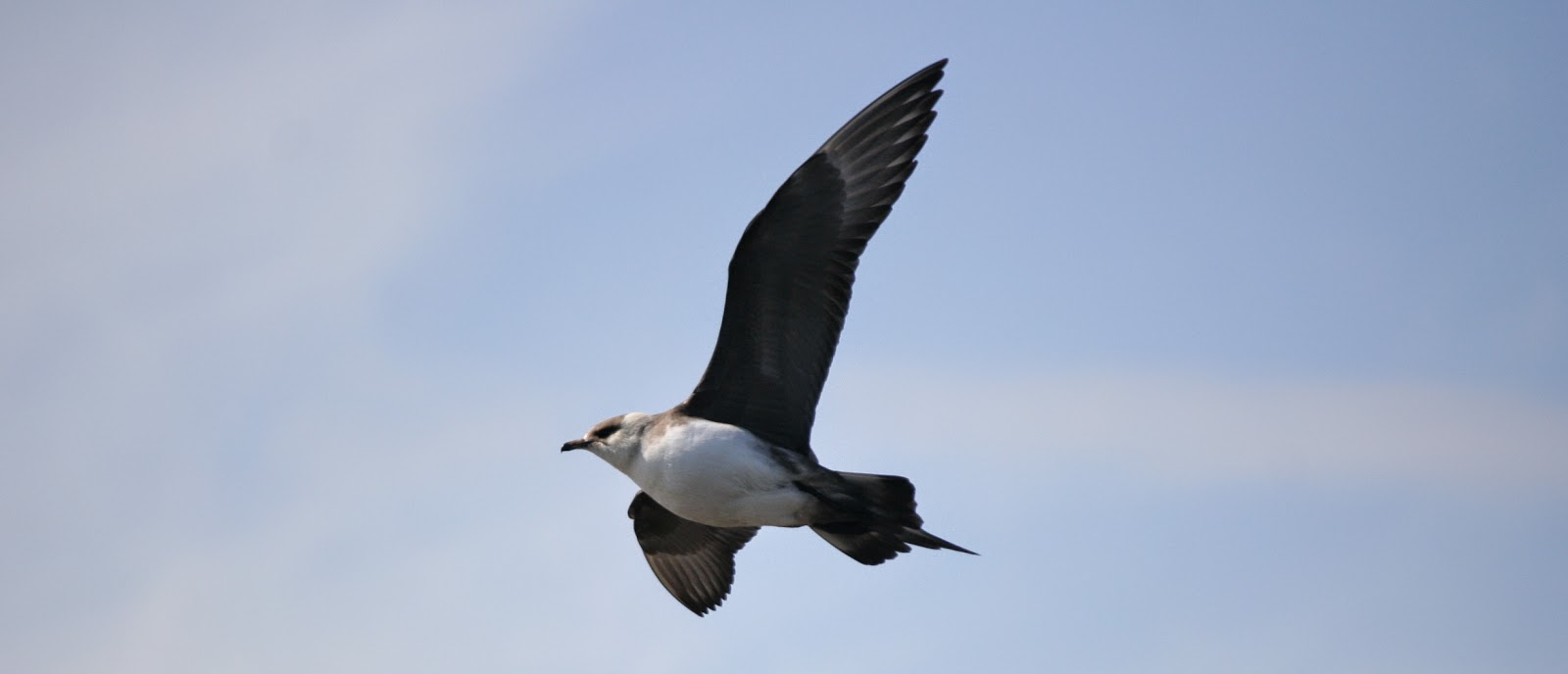PAJA Pair 2 Date: 7/4/14 Time
spent observing: 13:14 – 14:34
Temperature: 56 F Wind 11 mph 30% Cloud Cover
| Type of Behavior | Total Time Dark Morph | Percent time spent doing behavior | Total Time Light Morph | Percent time spent doing behavior |
| Defending | 8 | 10 | 6 | 7.5 |
| Incubating | 0 | 0 | 0 | 0 |
| Hunting/Foraging | 34 | 42.5 | 0 | 0 |
| Preening | 4 | 5 | 1 | 1.25 |
| Loafing | 27 | 33.75 | 8 | 10 |
| In flight | 3 | 3.75 | 0 | 0 |
| Altercation | 2* | 2.5 | 1* | 1.25 |
| Brood | 1 | 1.25 | 64 | 80 |
| Feeding | 1 | 1.25 | 0 | 0 |
Total time spent observing: 80 minutes
* = Altercation with King Eider pair.
They were dive-bombing them and the eiders were fighting back.
With these observations, I can conclude that the female of the pair is in fact the light-morph. I was hoping to get that down for Pair 1 as well, but am unlikely to figure it out.
 |
| Pretty freshly hatched chick in nest |
 |
| More alert chick just outside of nest |
 |
| Both chicks |
Below is an updated version of the proximity to nest table I included in the last post for PAJA Pair 2. According to these observations, they do indeed increase their defensive behavior as the eggs are closer to hatching and when they have young. I also saw this with Pair 1, and am thinking the day the fox was in the area, the chick may have been hatching or hatched.
| Date | Distance Observer from nest when pair began defense (in meters) |
| 6/16/14 | 40 |
| 6/19/14 | 66 |
| 6/19/14 | 30* |
| 6/23/14 | 78 |
| 6/27/14 | 95** |
| 6/27/14 | 106** |
| 7/4/14 | 129 |
* = distance I was able to stand from
the nest when the bird went back to incubating, this could be due to cold weather
** = only observed the proximity to the
nest when they began to defend, as I was busy doing the other surveys
in the area for that day
 |
| Light-morph in flight |
No comments:
Post a Comment